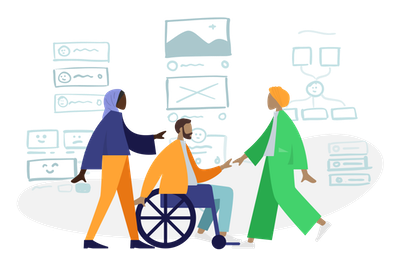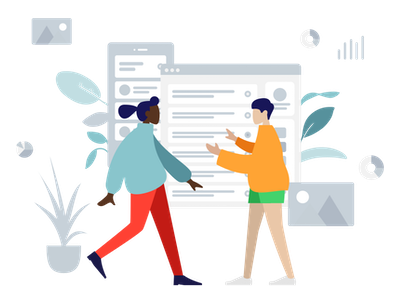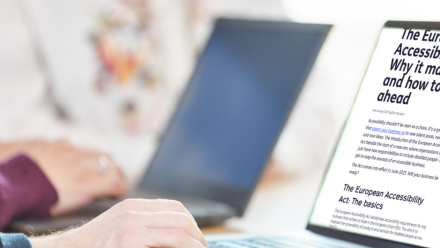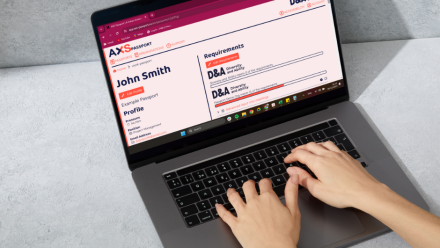7 signs you’ve created a truly inclusive workforce
3rd March 2021 by Ellie Thompson
It’s exciting, rewarding and relieving to see organisations waking up to the fact that diverse and inclusive workplaces truly are the future. But how can you know if you’ve fostered a diverse workforce where employees feel a genuine sense of inclusion and belonging?
Inclusivity is a core consideration in all of your business decisions.
To build a truly inclusive workforce, diversity and inclusion cannot be confined to a HR department or D&I lead. Diversity and inclusion needs to be considered in every business decision that is made.
Take advantage of the diverse backgrounds, knowledge and experience of your workforce by giving them spaces to share their ideas and feedback to you; from focus groups on specific new processes, to ongoing employee resource groups where people can share best practice, to just being fully transparent about all business decisions.

You’ve moved far beyond unconscious bias training.
At Diversity and Ability, we’re hesitant to speak about unconscious bias. Yes, each of us has been indoctrinated with prejudices and discriminatory practices in a way that affects every decision we make and interaction we have. But at this stage, you can’t shirk the blame by saying you weren’t aware of these prejudices. A lot of what is palmed off as unconscious bias is actually very much conscious now; for example, introducing punitive measures for employees who have frequent absences due to sickness is a bias against disabled people and those with caring responsibilities.
You need to accept the personal and organisational duty to understand where our biases sit in the context of history, discrimination and privilege. Work needs to be done to unpack and dismantle these biases in order to explore diversity fully. Instead, take a celebratory approach to difference. And if you’re not sure where to start, we can work with you to genuinely dismantle bias in our workshops and training programmes.
You have diverse representation in all spheres of your organisation.
It’s encouraging to see that the disability employment gap has slightly narrowed in recent years. What is less encouraging, however, is that the disability pay gap has in fact widened significantly. While disabled people may now be slightly more likely to find employment, our average earnings are lower.
This is a perfect example of the problem with focusing solely on employment, rather than equal representation. People from underrepresented groups should be visible in all spheres of the organisation, not just in lower-paid positions. When you have a truly diverse organisation, inclusion will be obvious at all levels.
Your staff turnover stays low.
The key with staff retention is making sure that it’s not just your recruitment practices that are inclusive, but your whole workplace.
We’ve written all about why your employee retention strategies should be focused on inclusion, so you can make the changes that matter to ensure your employees feel included and know they belong in your organisation.

You don’t see your organisation as a family. But you do see it as a community.
The thing about families is that as well as conjuring up images of closeness and warmth, they can also have problematic associations. Families do have inherent hierarchies, whether implicit or explicit, and- let’s be honest- can be pretty dysfunctional at times! Not to mention that lots of people from diverse backgrounds may have trauma associated with the concept of family.
You can encapsulate all the well-meaningness behind this thought and make for a healthier, happier workplace structure by thinking of your organisation as a community.
A community is somewhere that encourages mutual aid and sharing, where people feel able to exist as individuals with aspirations and lives but also be part of something bigger and work towards a common goal. Where people have space to share their thoughts and ideas, and give space for others to do the same. Doesn’t that sound like the kind of organisation you’d like to be?
You’ve created an anticipatory welcome for your team.
We know that a majority of people do feel unable to bring all of themselves to their workplace- whether that’s choosing not to share a disability, being closeted at work or hiding your socioeconomic background. This has negative effects on mental health, confidence and sense of self, and obviously in turn affects ability to work to your full potential.
Plus, for disabled and neurodiverse learners, this means we can miss out on vital adjustments that would allow us to access our work in the same way as our peers. We’ve written more about why sharing your neurodiversity at work is a blessing, not a curse. But the expectation should not be on the individual to ask for adjustments. It should be on the organisation to remove the need for them to ask in the first place. You can do this by ensuring all employees have access to resources, such as assistive technology software and wellbeing support. This way, the option is there for all those who need it, without the stress and uncertainty of having to disclose a diagnosis first.
But, finally: you acknowledge that this is a constant learning process.
Accepting that diversity and inclusion is not a case of building an inclusive structure and saying the job is done; it’s about recognising the need to always continue learning and evolving. Yes, this starts with analysing your existing process and structures and making sure they are accessible to all. But it also goes beyond this, to encouraging constant openness, welcoming feedback, and finding opportunities to learn further.
In a way, this may be a relief; there’s no expectation for you to create flawless inclusive working environments and be an expert in everything inclusion. Just to create an inclusive culture where there’s space to learn, welcome those who are experts to share their lived experience, and be ready to make changes. Remember that this is a learning curve, and we are here to help!


